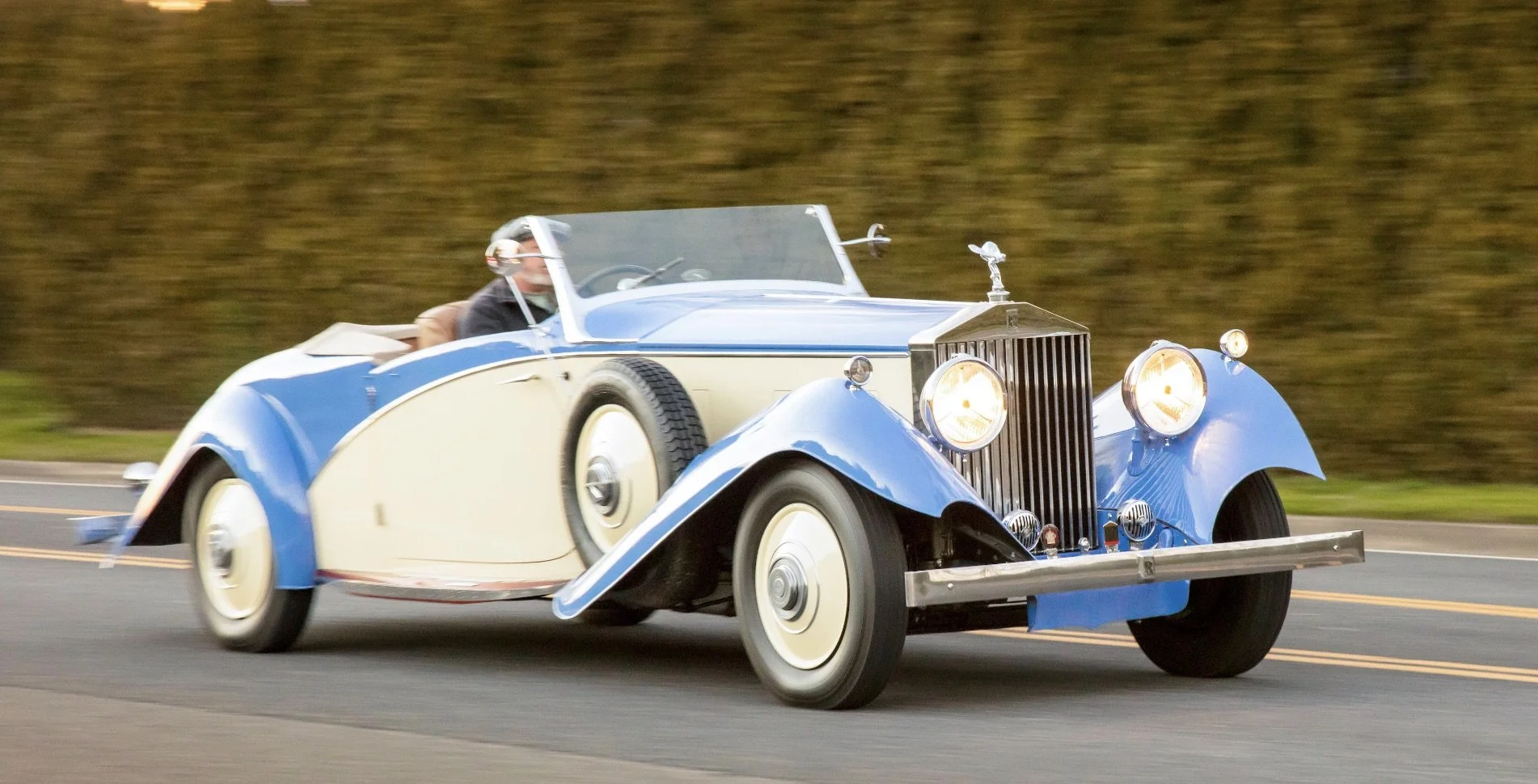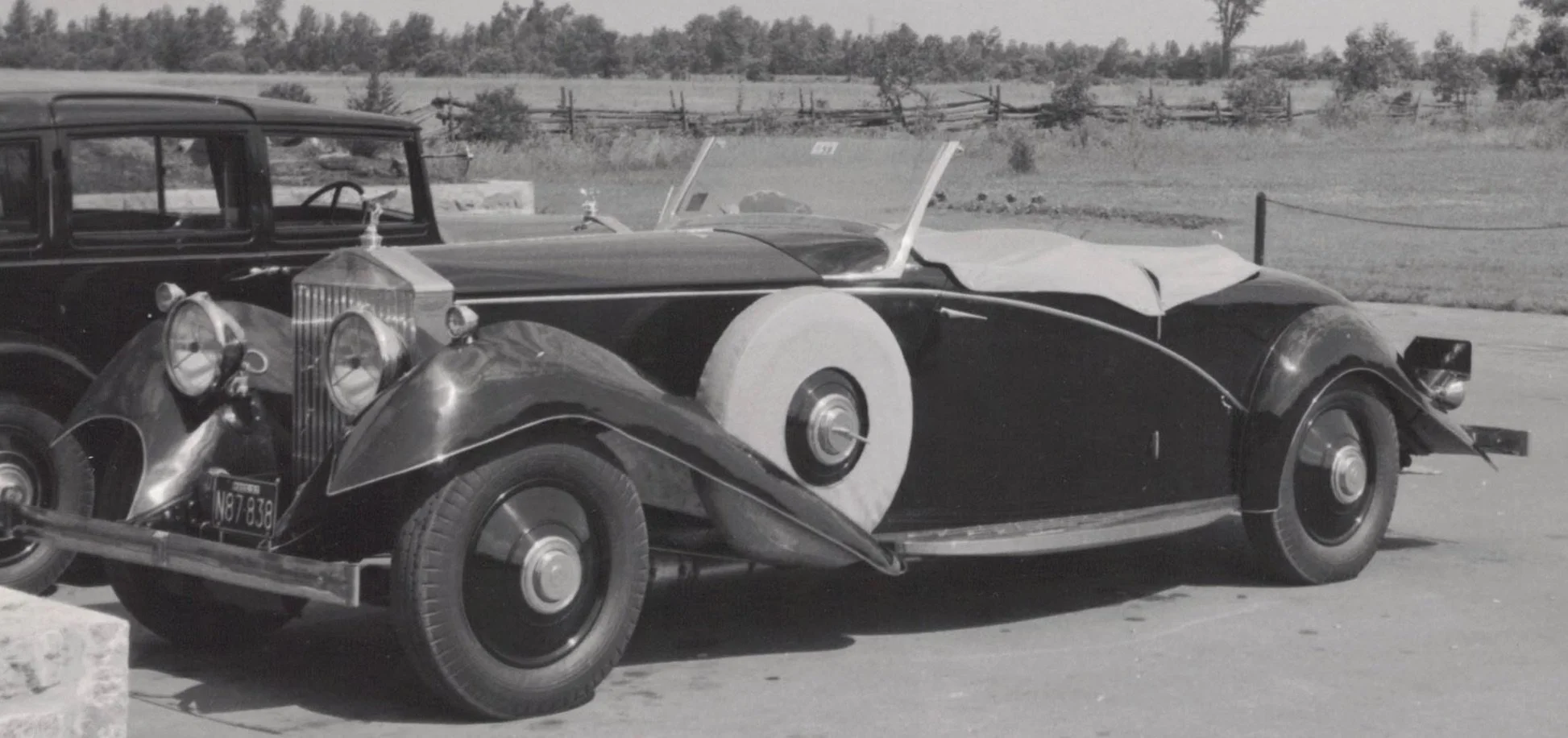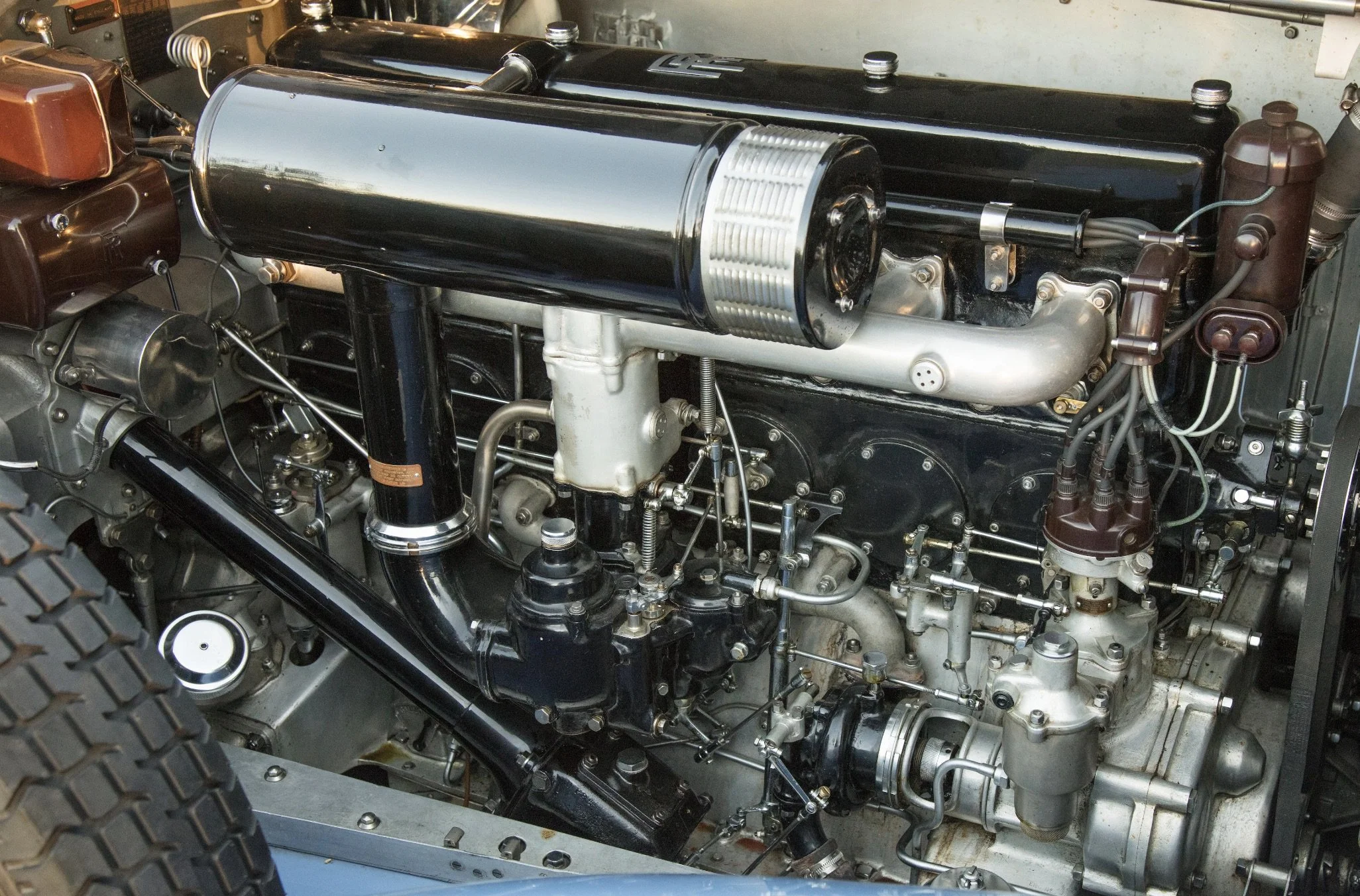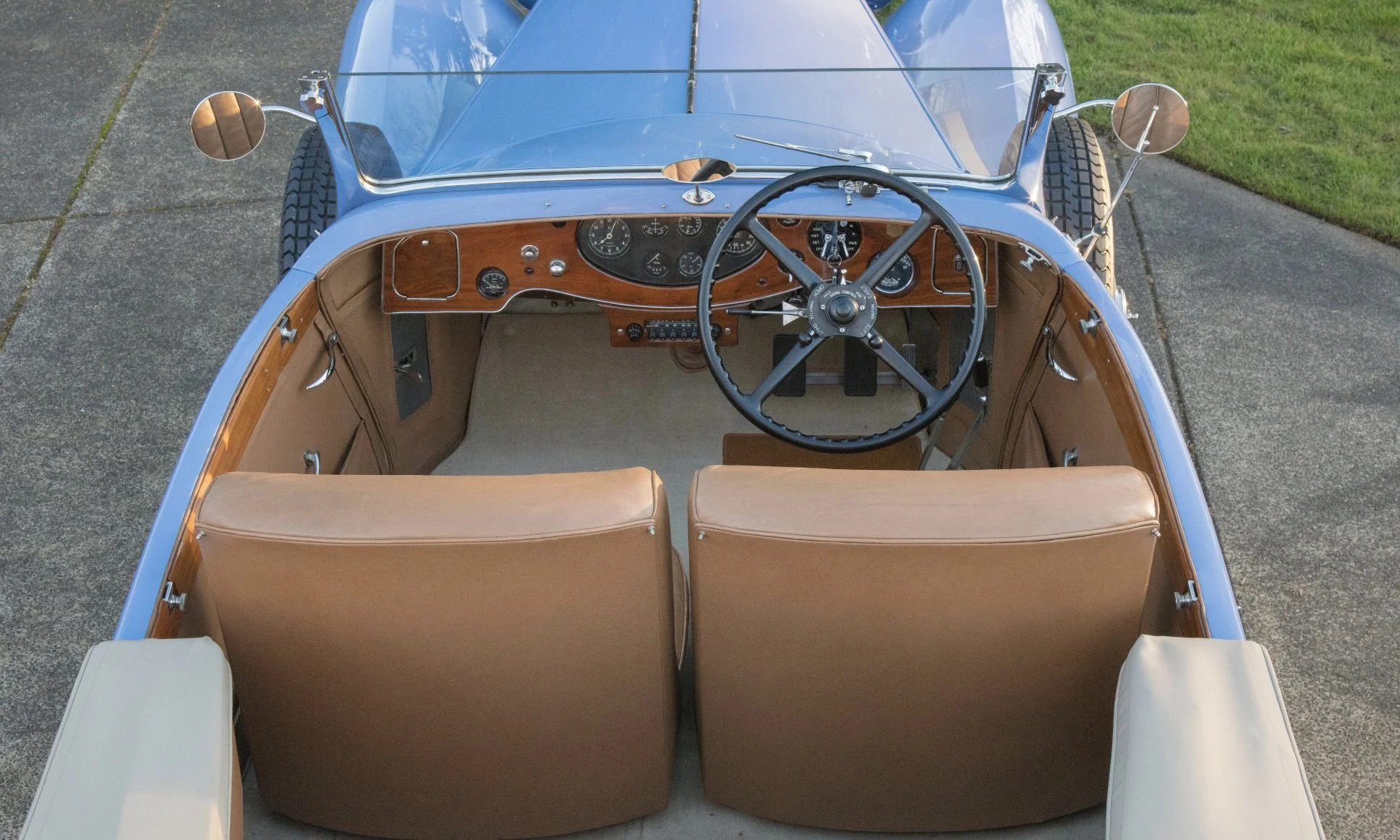1935 Rolls-Royce Phantom II Open Two-Seater
Body by: Hooper
Chassis No. 54UK | Body No. 10022
When shown at the Rolls-Royce Owners Club meet in Montreal, the car took both the Rolls-Royce Trophy and the Hooper Award — the only car to achieve this feat. Rogers continued to maintain and cherish the car until 1992, when it was sold to a close friend and fellow RROC member. Under his ownership, the car underwent a full frame-off restoration led by Jeff McDonald of McDonald Vintage Restorations, with the owner contributing his own mechanical expertise.
Refinished in Delft Blue with cream accents and retaining its original tan Connolly leather interior from the 1950s, the Phantom II still wears its unique Hooper-designed body and stainless steel detailing. A rare blend of originality, personal vision, and historical significance, it remains one of the most distinctive Rolls-Royces of the Classic Era.
Now preserved in the collection of Tom Maoli, this car reflects the pinnacle of bespoke prewar craftsmanship and postwar imagination. It stands not only as a tribute to Hooper’s final coachwork on the Phantom II, but also to the creative legacy of a single enthusiast who dared to bring his dream to life.
History and Significance
Few Rolls-Royces carry a story as personal or as imaginative as chassis 54UK, a 1935 Phantom II transformed into a one-of-a-kind two-seater sports roadster by a passionate engineer with a vision. Originally delivered to the United States with formal coachwork—likely by Inskip—the car spent its early years in Boston under the care of the Grew family before being acquired by Douglas Rogers in the early 1950s.
Rather than restore the formal body, Rogers dreamt of something different: a sporting open two-seater inspired by the great European coachbuilders. He sketched his vision and submitted it to the famed firm of Hooper & Co. in London. Osmond Rivers, Hooper’s lead designer, brought the lines to life under design no. C-4385, blending elegance with flair in a way few Phantom IIs had ever seen.
Rogers, a General Electric engineer, personally fabricated stainless steel fenders for the car after Hooper declined the complexity of the material. He also commissioned a high-compression head from Rolls-Royce to improve the car’s performance. When complete, the car was unlike anything else on the road — fast, beautifully balanced, and unmistakably elegant. It was the last Phantom II ever bodied by Hooper and one of the final coachbuilt examples completed for the chassis by any of its period craftsmen.
Design Differences
Refinished in Delft Blue with cream accents during a full frame-off restoration in the 1990s
Original Hooper lines and stainless steel fenders retained
Properly replated chrome and new wiring throughout
Subtle but athletic proportions not seen on other Phantom II variants
Exterior
Original tan Connolly leather interior installed in the 1950s, preserved in excellent condition
Minimalist two-seat layout with period instrumentation and sports car-style cockpit
Interior
7,668cc inline 6-cylinder OHV engine with single carburetor, producing 120 bhp
Fitted with a high-compression head commissioned by Rogers from Rolls-Royce, improving performance
4-speed manual gearbox and leaf spring suspension with servo-assisted drum brakes
Equipped with single-shot chassis lubrication
Known for its outstanding roadability and quiet operation despite its sporting stance
Engine/Performance
Gallery
















